The Golden Age of Spite Fences
Plus Toronto's most infamously haunting portrait, the renaming of Dundas, and more...
They towered above Toronto for decades, ruining views and blocking out light. They rose in front yards, backyards and driveways, immense walls of wood, brick and corrugated iron. They were fences built with revenge in mind, barricades on the frontlines of countless petty squabbles, weapons in the tiny wars waged between neighbours across the city. They were monuments to disgruntlement, testaments to tension. So spiteful, they became known as a “spite fences.”
They weren’t unique to Toronto by any means, but if you take a look back through local newspapers from about a century ago, you'll find them mentioned over and over again. High fences built during disagreements between neighbours, aiming to make life miserable for those on the other side. They went up in Parkdale, Rosedale, the Beaches, the Annex, the Junction… A fence on Balsam Avenue rose thirty feet into the air; city staff worried it might topple in a high wind. A landlady on Bathurst complained that a twelve-foot fence was plunging her house into darkness, costing her five dollars a month in rent she couldn't charge her tenants. On Palmerston Avenue, a resident posted a notice aimed at a neighbour's fence during the final months of the First World War: "Babylonia fell, Rome fell. The Kaiser will fall — and our neighbor's spite fence."
It was an optimistic declaration. According to city staff, there were nearly two dozen spite fences in Toronto by then. But it was nearly impossible to get any of them removed. Spite fences were perfectly legal; even the authorities had no power to do anything about them. "I am sorry that I cannot help you," one judge explained to a complainant, "but if I had the power I would penalize the neighbor and all others who build spite fences." When one resident tore down his neighbour's spite fence on Wallace Avenue in the west end, the courts made him pay for the cost of replacing it — more than a thousand dollars in today's money.
A decade later, The Toronto Daily Star explained the situation to a reader who complained they were the victim of a fence blocking light from reaching their dining room. The only way you could force someone to remove a spite fence was if you had established a "right to the light" by living there for 20 years… before 1880. In other words, you had to have been there for nearly 70 years. Some residents tried other tactics, asking the fire department to label a fence as a hazard or simply applying to have their taxes lowered to reflect the damage being done to their property values.
By then, the City of Toronto had been trying to fight the fences for many years, asking the provincial government for the legal powers they needed to combat them. Those pleas had long been ignored at Queen's Park. But now, there was hope. In 1926, one of the Ontario government's own MPPs introduced a bill to give municipalities the power they needed. Toronto would finally be able to ban spite fences, keeping new ones from being built while tearing down those that had already gone up.
And at first, it looked like the bill had the support it needed. But then, questions began to arise. Some politicians worried it was impossible to find a clear distinction between an ordinary fence and a spite fence, that any definition would be unfair. The Star paraphrased another MP who argued, "it was an infringement of a man's rights to restrict him in the use of his property providing he did not interfere with his neighbor's rights." When the premier weighed in, he agreed: "a man should be allowed to use his property for his own purpose."
The clause was struck from the bill. The spite fences would live on.
But the golden age of spite in Toronto was coming to an end. As the Great Depression hit, the fences began coming down. It seems they just weren't as popular anymore. By the end of the 1930s, city officials reported there were few spite fences left, and no new ones going up. "Toronto," the Star announced, "is becoming a city of good neighbors."
In the decades to come, newspapers would still report their existence from time to time. My own personal favourite might be the fence that divided a driveway in the 1940s, inspiring a spite sign in response: a giant arrow pointing at it with the words "SPITE FENCE" in big, bold letters. But over time, those reports became less and less frequent.
Today, there are strict limits on fences in Toronto; our bylaws dictate how high they can be, where they can stand, and what they're made of. Some people in the city are even hard at work to change the way we think about fences altogether — and to bring them down one by one. The Downtown De-Fence Project was founded by Dave Meslin of The Toronto Public Space Committee to "liberate yards from the tyranny of chain link." Volunteers remove fences for free at the request of homeowners, bringing down the barriers that have divided our city since long before the golden age of Toronto spite fences began.
"I think it's about having an optimistic view of the way that humans can interact," Meslin once explained. "When you say, 'Good fences make good neighbours,' it's almost based on this premise that people can't really get along.
"What a terrible way to think about cities."
I first learned about the Downtown De-Fence project thanks to an episode of “The Life-Sized City,” a documentary from a few years ago filled with inspiring stories of grassroots projects across that aim to make Toronto a better place to live. The quote I used comes from it, too. You can watch it below.
And if you’d like your own fence removed for free, you’ll find the Downtown De-Fence Project here.
If you aren’t already a paid subscriber and you’d like to make the switch, all you have to do is click the button below. Not only will you get 10% off my online courses and invites to exclusive events, you’ll also be supporting all my work while helping to ensure The Toronto History Weekly survives. This newsletter is a ton of work! Only about 5% of readers have made the switch so far, which basically means that by offering a few dollars a month you’ll be giving the gift of Toronto history to 20 other people.
Toronto’s Most Infamously Haunting Portrait
It’s a photo you may have seen before; the chilling Victorian portrait of Joseph Bloore regularly makes the rounds on social media. But the story of the man in the photo is a bit less well-known, so I wrote about him in the newsletter last summer. And now that story has been given the Torontoverse treatment, with a map highlighting the places you’ll find around our city connected to Bloore’s life.
I’ll Be Talking About Clowns & Murder At The MOTIVE Festival!
The MOTIVE Crime & Mystery Festival is Canada’s biggest crime and mystery writing festival, organized by the Toronto International Festival of Authors. And it’s only a couple of weeks away! This year’s edition will be held at Harbourfront on June 2–4.
I’ll be giving two big talks during the event. On Saturday at 4pm, I’ll be sharing the story of the Toronto Circus Riot. And on Sunday at 4pm, I’ll be talking about Toronto’s most notorious murders. Hope to see some of you there!
QUICK LINKS
The best of everything else that’s new in Toronto’s past…
RENAMING DUNDAS STREET NEWS — Francine Kopun gives us a big update on the renaming of Dundas Street. The municipal government decided to find a new name for the street two years ago, with growing awareness of the role Henry Dundas played in delaying the abolition of the slave trade across the British Empire. A shortlist of potential new names is due out this summer. But some candidates in the mayoral election are trying to re-open the debate, promising to cancel those plans if they get elected. Read more.
SIR JOHN. A IN A BOX NEWS — The statue of Sir John A. Macdonald that stands in a place of honour outside Queen’s Park has been hidden away behind protective cladding for three years now, along with a notice that “The Speaker of the Legislative Assembly is considering how the depictions of those histories in the monuments and statuary on the Assembly’s grounds can respect all of our diverse cultures and peoples.” Steve Paikan gives us an update on its status. In short: it doesn’t sound like a decision about the monument’s fate is coming anytime soon. Read more.
THAT NIGHT IN TORONTO NEWS — A new play is telling the story of the Christie Pits Riot in the place it happened, with a series of performances for students over the next few weeks. Isabel Teotonio writes about it for The Toronto Star. Read more.
PATIO SEASON NEWS — The Imperial Pub’s rooftop patio is one of my favourite somewhat-hidden-gems in Toronto, giving you a spectacular view of Yonge & Dundas Square. On Twitter, Hogtown 101 takes us back to the same spot in the 1980s:
(Click to open.)
GHOST SIGN NEWS — Katherine Taylor shares a hidden gem, too: a ghost sign on Dundas, just north of Bloor. You’ll get this great view of it as you cross the Wallace Avenue footbridge:
(Click to open.)
BIG OLD TREE NEWS — The great red oak in Kew Gardens is thought to have stood there for more than 200 years, since the city’s founding days and maybe even beyond. This week it’s getting its own historical plaque. I’ll share the details for the unveiling in the event listings below, and Birgit Siber wrote about the tree for Beach Metro Community News. Read more.
NEW TOWER NEWS — This week there’s news of two new developments that will affect heritage properties: one tower would retain the beautiful facade of a 100-year-old office building on the stretch of Front Street between the Royal York Hotel and the Hockey Hall of Fame (read more); the other would rise on Sherbourne Street just south of Bloor, incorporating the facades of some houses from the late 1800s and early 1900s (read more).
IT WILL BE REOPEN TO TRAFFIC IN 2027 NEWS — Victor Caratun gives us a then & now look at Queen Street outside the Eaton Centre:
(Click to open.)
TORONTO HISTORY EVENTS
MASS CAPTURE: CHINESE HEAD TAX AND THE MAKING OF NON-CITIZENS
May 24 — 7pm — Jane/Dundas Library — Meeting Room
“Professor Lily Cho joins us to discuss her award-winning book, Mass Capture: Chinese Head Tax and the Making of Non-citizens. Through extensive archival research on C.I.9 certificates, Canada's first mass use of photo identification, the book delves deep into the history of surveillance and exclusion against Chinese migrants in the country. Come join us to revisit this important part of Canadian history as we commemorate the 100th anniversary of the Chinese Immigration Act of 1923 (commonly known as ‘the Chinese Exclusion Act’).”
Free!
MR. DRESSUP TO DEGRASSI: 42 YEARS OF LEGENDARY TORONTO KIDS TV
May 24 to August 19 — Wed to Sat, 12pm to 6pm — 401 Richmond — Myseum
“The TV shows of your childhood hit closer to home than you might think. From 1952 to 1994, Toronto was a global player in a golden era of children’s television programming. For over four decades, our city brought together innovative thought leaders, passionate creators and unexpected collaborations – forming a corner of the television industry unlike any other in the world. Toronto etched itself into our collective consciousness with shows like Mr. Dressup, Today’s Special, The Friendly Giant, Polka Dot Door, Degrassi, and more. Journey through Toronto’s heyday of children’s TV shows in this playful exhibition.”
Free!
UNVEILING OF THE HERITAGE TORONTO COMMEMORATIVE PLAQUE FOR THE GREAT RED OAK IN KEY GARDENS
May 25 — 2pm — Kew Gardens
“A Heritage Toronto Plaque will be unveiled to recognize the Great Red Oak Tree in Kew Gardens. The ceremony will be Thursday, May 25 at 2pm and all are welcome. Please join us to celebrate south of Queen Street, along Lee Avenue, near the Dr. William D. Young Memorial Fountain.”
Free!
OLD CHINATOWN: PERSERVERANCE AND ACTIVISM
May 26 — 11am — Yonge & Adelaide — Mackenzie House
“This walk will explore the early settlement patterns of the Chinese community in Toronto. Specific focus will be given to Old Chinatown, located in Toronto's Ward neighbourhood. We will acknowledge unshared histories of Chinese individuals and communities while celebrating Asian Heritage month. While acknowledging the struggles and resiliency of individuals within the community, we will look at the implications of municipal and national policies directed towards the Chinese community. Walk meets at the Northeast corner of Yonge and Adelaide Street.”
Free with registration!
DOORS OPEN TORONTO
May 27 & 28 — All day — Various sites
“Explore some of Toronto’s most architectural, cultural and socially significant sites for free during Doors Open weekend. Examine how music and sound have helped shape the city with a program of exciting performances, engaging tours and insightful talks.”
Free!
GUIDED TREE WALK OF RIVERDALE PARK EAST
May 28 — 2pm — Riverdale Park East
“Join arborist Todd Irvine on a free guided walk to explore the interesting trees of Riverdale Park East.”
Free with registration!
DIS/MANTLE: WELCOME TO MRS. PIPKINS’ MANOR
Until May 28 — Spadina House
“Louisa Pipkin was a freedom seeker, who escaped enslavement in the United States and came to Canada where she worked as a laundress in the 1870s for the Austin family, the founders of the Dominion Bank of Canada and the homeowners of Spadina. Dis/Mantle reimagines Spadina Museum using an Afrofuturism narrative: where Mrs. Pipkin is now the homeowner and the house is a safe haven for those seeking freedom through the Underground Railroad. The group show includes soundscapes, ceramics and visual art from Canadian artists from the Afro Caribbean diaspora, including an iconic portrait of Louisa Pipkin and a series of new portraits of members of the Black community by lead artist Gordon Shadrach.
Free!
LIKKLE HERITAGE TREASURE HUNT
June 3 — 11am to 4pm — Little Jamaica — Heritage Toronto
“Join Heritage Toronto in Little Jamaica for a heritage treasure hunt like never before. Uncover the vibrant history of this Caribbean community through food, music and the stories of the people who have lived and worked in the neighborhood. Take a delicious taste test of Jamaican and Caribbean cuisine (limited quantity), listen for clues in the groove of the reggae tunes, try your hand at black hair care and answer some trivia questions.”
Free with registration!
TRANSPORTATION & INDUSTRY — SWANSEA WALKING TOUR
June 3 — 1:30pm — Jane & Bloor — Swansea Historical Society
“Our tour leader will point out forms that came and went, and some that were proposed but never actually built, while reflecting on how we memorialize them in an era of increasing awareness of Indigenous history. As many of you know, for centuries the native portage route known as the Toronto Carrying Place essentially followed the present alignment of Riverside Drive in Swansea. In the 1890s, the short-lived Belt Line Railway ran north and south through Swansea, just east of today’s South Kingsway. The southern part of Swansea was home to several industries. The longest-surviving and probably best known industry started out as the Swansea Bolt Works, before becoming part of the Steel Company of Canada (Stelco), and eventually being replaced by residential developments in recent decades.”
Free!
THE MISSISSAUGA AND THE LEGACY OF THE TORONTO PURCHASE
June 15 — 7:30pm — Online — Etobicoke Historical Society
“Why are the Mississauga of the Credit First Nation not in Mississauga? Historian and consultant Karen Travers will discuss diplomatic and economic relationships between the Mississauga, and British officials and settlers that led to the negotiation of Treaty 13 in 1805, as well the impact of settlement, policy and law that forced them to relocate to Hagersville, Ontario in the mid-19th century.
“Karen is an EHS board member and Communications manager for our media releases. As a historian and consultant with research experience on issues related to Indigenous land and resource rights, she has published articles and reports on Indigenous policy and Ontario history. In addition to academic teaching and presenting, she has worked as a research/program manager and analyst for non-profit organizations devoted to furthering Indigenous business development and engagement.”
Free for members; memberships available here.

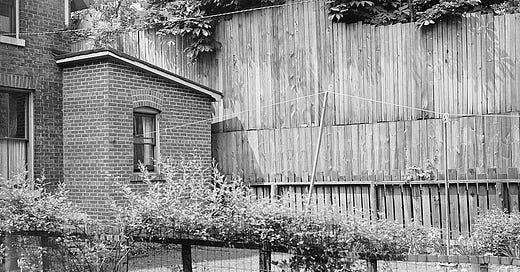



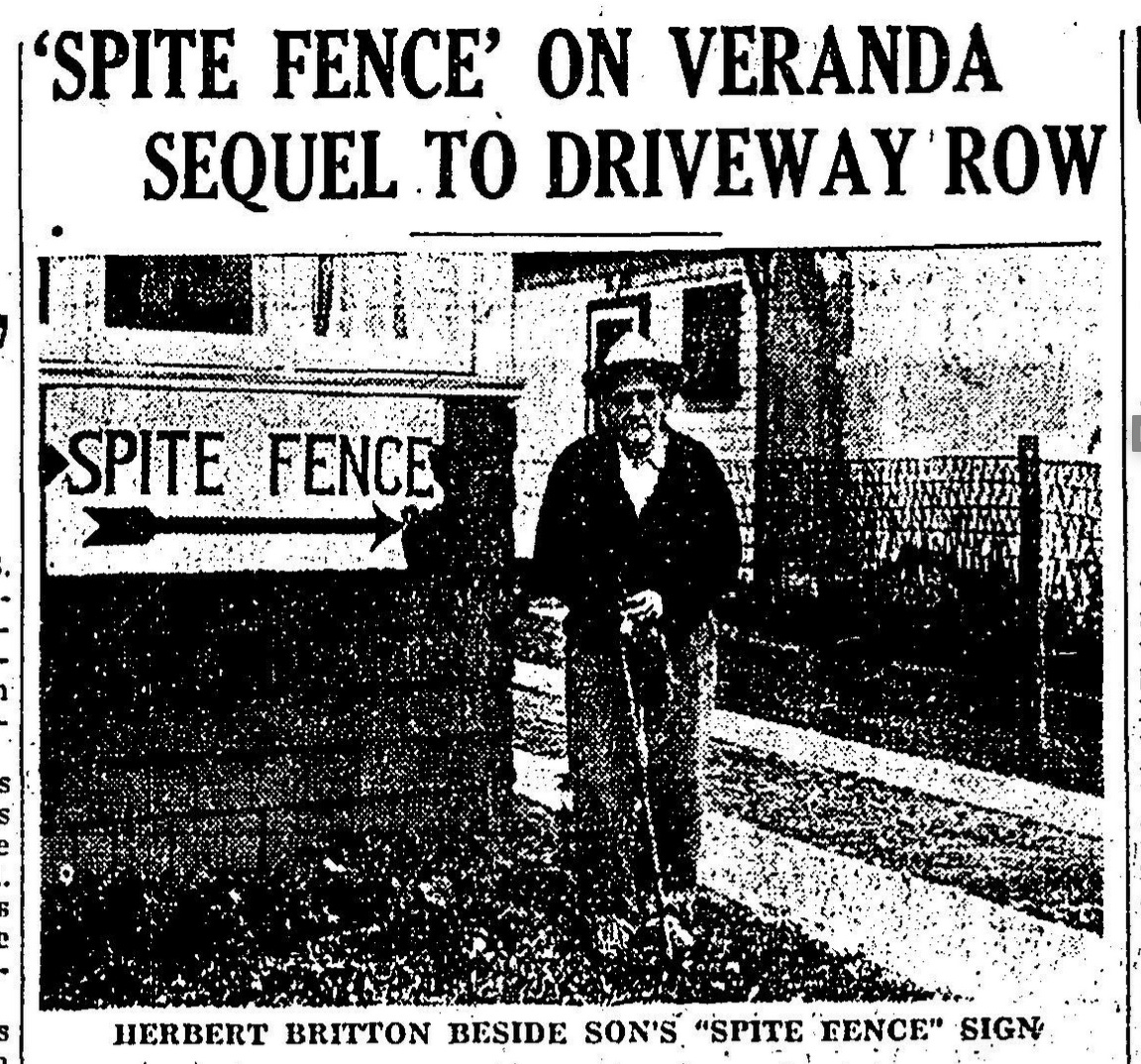
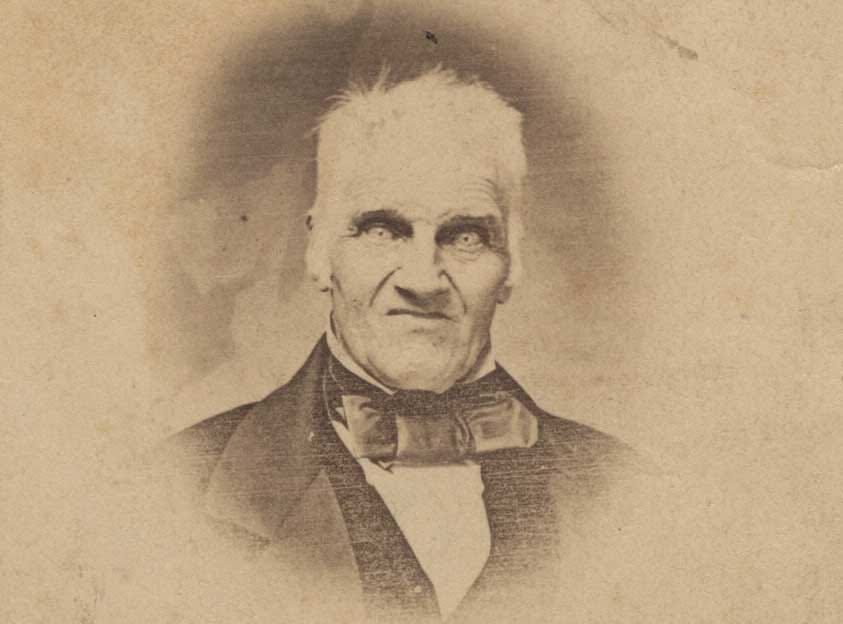
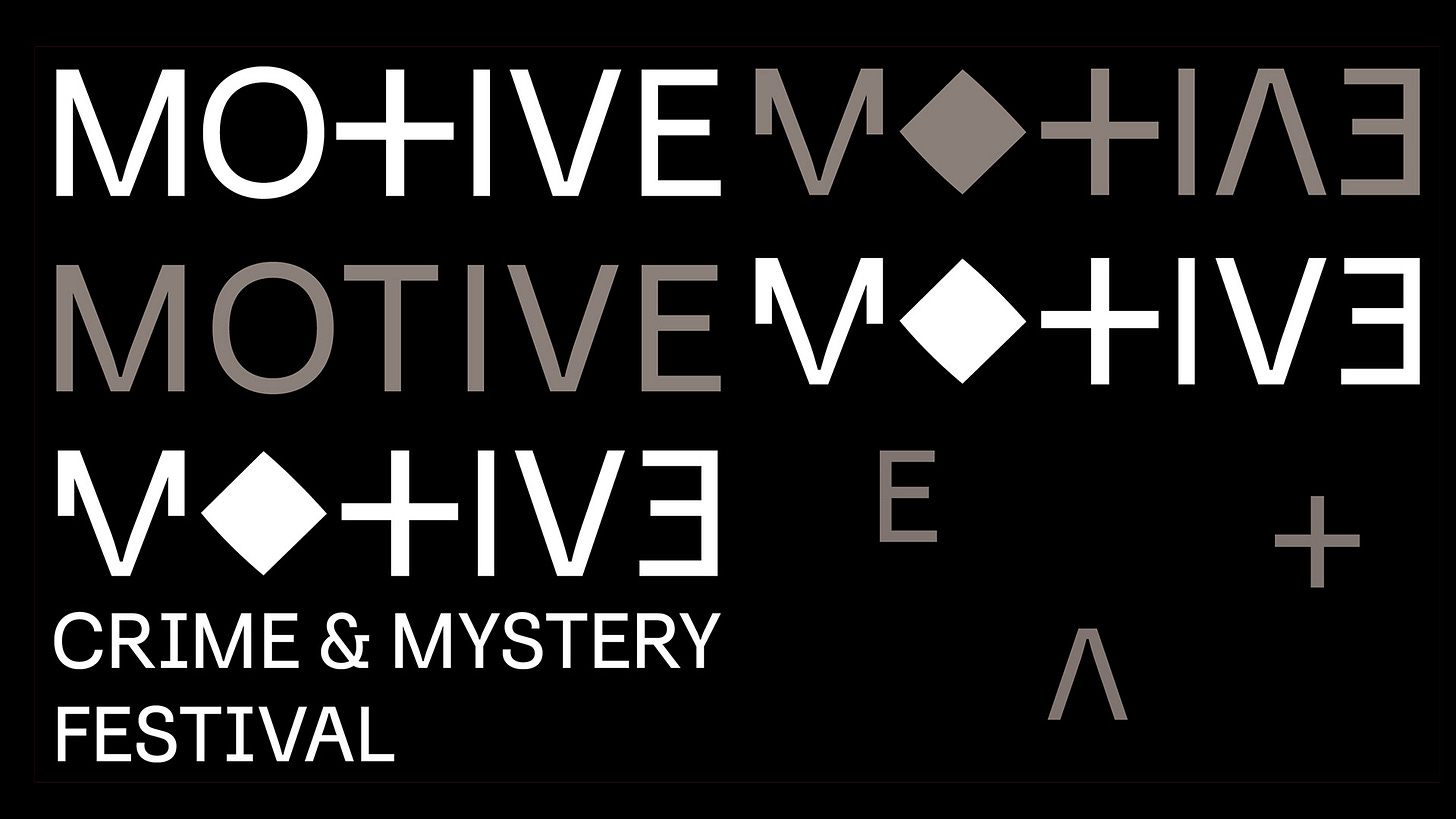
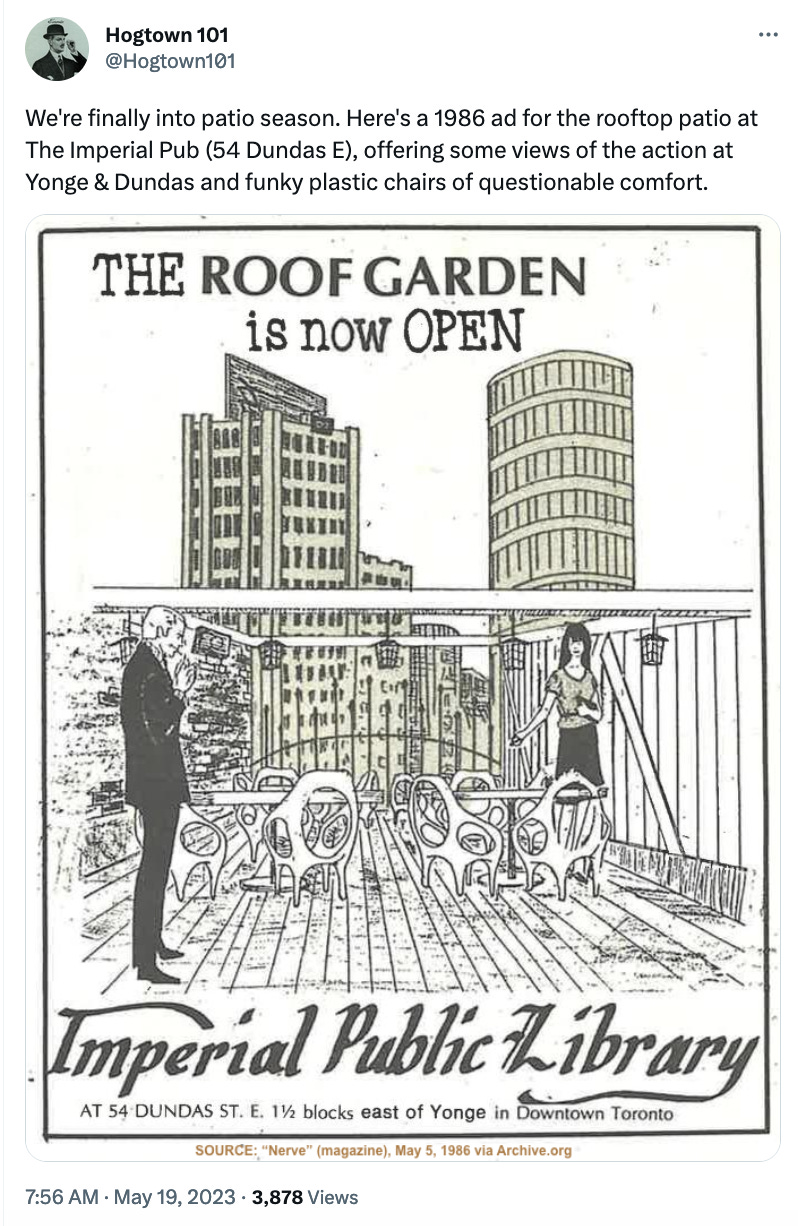


Crazy to imagine Toronto without all the regulations around building fences. Really enjoyed this one Adam!
Let’s put a spite fence around Washington DC and Ottawa!